Fiber Termination Boxes Overview
In the realm of fiber optic technology, the termination box is a pivotal component, serving as the bridge between the provider and the end-user. As we delve into the world of these essential devices, we aim to shed light on the various types of termination boxes and underscore the importance of fiber tools in ensuring efficient and reliable network performance.
Types of Fiber Termination Boxes
Fiber termination boxes come in different forms, each serving specific needs within fiber optic infrastructure. We can categorize these boxes based on their mounting configurations and the environments they are designed for.
- Outdoor Fiber Termination Boxes: Specially designed by companies like Fiber Savvy, these termination boxes are robust and weather-resistant, perfect for FTTH (Fiber to the Home), FTTB (Fiber to the Building), or FTTC (Fiber to the Curb) applications. They can split bulk fiber into up to 16 different locations while safeguarding the network connection (Fiber Savvy).
- Rack-mounted Termination Boxes: These boxes are generally used within server racks. They have doors for protection and are designed to organize and manage fiber cable connections efficiently.
- Wall-mounted Termination Boxes: Typically, these are sealed units that are mounted on the wall. They are ideal for applications where space is a constraint and offer a secure way to house fiber optic cables and connectors.
For more specific details on wall-mounted options, you can explore our comprehensive guide on fiber termination box wall mount.
| Mounting Type | Description | Environment |
|---|---|---|
| Outdoor | Weather-resistant, split bulk fiber | FTTH, FTTB, FTTC |
| Rack-mounted | With doors, attached to servers’ racks | Data centers, server rooms |
| Wall-mounted | Sealed, hung on the wall | Space-limited areas, indoor use |
Data derived from Fibertronics
Importance of Fiber Tools
The utilization of the correct tools for the installation and maintenance of fiber termination boxes is critical. Fiber Savvy emphasizes the wide array of fiber tools and optic testers available that assist in the deployment of fiber optic cables (Fiber Savvy).
Fiber tools are essential for:
- Ensuring accurate and precise fiber optic cable installation.
- Facilitating efficient servicing and maintenance of fiber termination boxes.
- Enhancing the longevity and reliability of the fiber optic network.
The internal structure of fiber termination boxes, including their supporting frame, aids in maintaining an organized and dustproof environment for fibers, which is vital for outdoor use given its corrosion resistance. For guidance on installation, our fiber termination box installation page offers valuable insights.
By acknowledging the variety of fiber termination boxes and recognizing the significance of specialized fiber tools, we set the stage for a well-informed selection process, aimed at securing the best fiber termination box price and ensuring a high-performing fiber optic network.
Choosing the Right Fiber Termination Box
Selecting the optimal fiber termination box is essential for ensuring a secure and efficient fiber optic network. Here, we’ll discuss the key factors to consider when making your choice and how seeking assistance from experts can facilitate this process.
Factors to Consider
Several factors should be taken into account to ensure you select the best fiber termination box that caters to your specific needs:
- Capacity: Determine the number of fiber optic cables that the box needs to accommodate. This will influence the size and type of box you require.
- Environment: Whether the installation is indoors or outdoors will affect your choice. For outdoor use, the box must have good corrosion resistance and be weatherproof. Consider our fiber termination box wall mount for secure outdoor installations.
- Compatibility: Ensure the termination box is compatible with the type of fibers and connectors you plan to use. It should support various types of fiber connectors and splices.
- Scalability: Future-proof your investment by choosing a box that can accommodate potential network expansions.
- Ease of Installation: Some boxes are more user-friendly than others. Look for designs that simplify the installation process. For more information on installation, visit our fiber termination box installation page.
- Cost: While not the only consideration, the price is certainly a significant factor. It’s important to balance cost with quality to ensure long-term reliability and performance.
- Standards Compliance: Verify that the box meets industry standards and certifications, which is a testament to its quality and safety.
Assistance from Experts
We understand that with so many variables, choosing the right fiber termination box can be a daunting task. This is why we recommend consulting with knowledgeable representatives who can guide you through the selection process.
Companies like Fiber Savvy offer experienced professionals who can help you pinpoint the appropriate Fiber Distribution Box for your setup. They take into account your project requirements and budget constraints to find competitive pricing on quality products.
Remember, a fiber termination box is more than just a container; it’s an integral component of your network’s infrastructure. By considering these factors and seeking expert advice, you can make an informed decision that ensures your network’s longevity and performance.
Understanding Fiber Termination Boxes
Fiber termination boxes are an integral part of today’s fiber optic networks, ensuring a secure and organized connection point for fiber optic cables. As we delve into the nitty-gritty of these devices, it’s imperative to comprehend their internal structure and the various components that contribute to their functionality.
Internal Structure
The internal structure of a fiber termination box is meticulously crafted to maintain fibers in an orderly fashion. According to Fibertronics, the design includes a supporting frame, which serves as the mainstay of its internal architecture. This frame is engineered to be dustproof and offer excellent corrosion resistance, particularly for outdoor applications.
Fiber termination boxes are designed to be user-friendly, allowing for easy access to the fibers for maintenance or reconfiguration. The internal layout is arranged to prevent the bending of fibers beyond their minimum bend radius, thus safeguarding the integrity of the optical signal. The arrangement also facilitates easy identification and management of individual fibers, which is crucial during installation and troubleshooting.
For a more detailed exploration of the installation processes, we invite you to learn about fiber termination box installation.
Components and Functions
Fiber termination boxes consist of several key components, each playing a vital role in the protection and termination of fiber optic cables:
- Fiber Connector Protection Element: This component safeguards the delicate fiber optic connectors from environmental factors and mechanical damage.
- Internal Components:
- Splice Tray: Used for organizing and protecting fiber splices.
- Adapter Panel: Houses the couplers or adapters that connect the incoming fiber cables to the outgoing fibers.
- Cable Management Space: Provides a designated area for routing and securing cables.
- Housing: The exterior casing that encloses the internal components, providing overall protection against physical impacts and environmental conditions.
Fiber termination boxes cater to various applications such as agricultural telephone networks, data transmission systems, image transmission systems, and CATV cable TV series. Fibertronics highlights their essential role in these applications, emphasizing the need for robust and reliable connectivity solutions.
Outdoor Fiber Termination Boxes, such as those offered by Fiber Savvy, are tailored for FTTH (Fiber to the Home), FTTB (Fiber to the Building), or FTTC (Fiber to the Curb) applications. These boxes can split bulk fiber into up to 16 different run locations while ensuring the network connection is protected from the elements and potential tampering.
It’s also worth noting the importance of having the appropriate tools for installing and servicing these termination boxes. Fiber Savvy underscores the significance of a comprehensive selection of Fiber Tools and Fiber Optic Testers to support fiber optic cable installation projects, ensuring efficiency and precision.
For those considering an outdoor installation, our guide on fiber termination box wall mount provides valuable insights into selecting and securing your fiber termination box in an outdoor setting.
Understanding the internal workings and components of fiber termination boxes is crucial for anyone involved in fiber optic networking. This knowledge not only aids in selecting the right box to meet specific network requirements but also ensures that the selected box can be effectively utilized for optimal performance and longevity.
Compliance and Standards
As we navigate the market for fiber termination boxes, it’s crucial to understand that compliance and standards are not merely formalities. They are the benchmarks that ensure safety, reliability, and performance in our telecommunications infrastructure.
Certifications and Compliance
When selecting a fiber termination box, certifications are a testament to the product’s adherence to industry norms and regulations. Products like those from Fibertronics, Inc., which meet AS9100D and ITAR certifications, not only fulfill NEC 770 compliance standards but also set a high bar for quality assurance in the telecommunications sector (Fibertronics).
These certifications indicate that a fiber termination box has been rigorously tested and evaluated to meet specific requirements. For instance, the Federal Communications Commission (FCC) mandates that special access rates, terms, and conditions must be just and reasonable, ensuring that all users have equal access to these crucial services (Broadband Breakfast).
| Certification | Description |
|---|---|
| AS9100D | A standard that specifies requirements for a quality management system within the aerospace industry. |
| ITAR | International Traffic in Arms Regulations, which govern the export and import of defense-related articles and services. |
| NEC 770 | National Electrical Code standards that apply to optical fiber cables and raceways. |
When considering fiber termination box installation, ensuring these compliance standards are met is paramount for both safety and functionality.
Quality Assurance
Quality assurance in fiber termination boxes is not just about meeting legal requirements—it’s about ensuring that every unit operates at peak performance. This involves systematic processes and checks that guarantee every component functions correctly and efficiently.
A comprehensive review of wholesale competition regulations by the FCC aligns with the need for a coherent and effective framework. This framework would ensure the widespread availability of high-quality inputs for broadband services, which are indispensable to small businesses, mobile providers, and enterprise customers (Broadband Breakfast).
In practice, quality assurance involves several layers of checks:
- Design Verification: Ensuring the product design meets certain criteria before production.
- Production Testing: Rigorous testing during the manufacturing process to catch any defects.
- Post-Production Inspection: A final check to ensure that the product meets the required standards before it is shipped.
When evaluating the fiber termination box price, remember that investing in a product with solid quality assurance measures can save costs in the long run by reducing the likelihood of malfunctions and maintenance issues. Quality assurance is an integral component of any fiber termination box you choose to deploy in your network.
Fiber Optic Technology Benefits
The integration of fiber optic technology into modern communication systems has revolutionized the way we connect and interact. As we consider the impact of fiber optics, it’s important to recognize how this technology enhances our lives, particularly through high-speed internet and enhanced communication capabilities. Below, we explore the transformative benefits that fiber optic technology brings to both personal and professional spheres.
High-Speed Internet
One of the most significant advantages of fiber optic technology is the provision of high-speed internet. Fiber optic internet offers download speeds up to 100 times faster than traditional broadband connections. This leap in speed allows for high-definition video streaming, large file downloads, and uninterrupted online gaming, transforming the user experience into something much more seamless and efficient (STL Tech).
| Internet Type | Download Speed (up to) |
|---|---|
| Fiber Optic | 1 Gbps |
| Traditional Broadband | 10 Mbps |
As we assist our clients in selecting the ideal fiber termination box for their needs, we emphasize the importance of a robust infrastructure that can support the incredible speeds that fiber optic technology can deliver. Proper installation (fiber termination box installation) is crucial to ensure that users can fully benefit from the capabilities of fiber optics.
Enhanced Communication
Fiber optic technology has also greatly improved communication by enabling data transmission over long distances without signal degradation. It facilitates real-time connections between people and businesses across the globe, leading to the development of technologies such as video conferencing and VoIP (Voice over Internet Protocol). These advancements have not only made international business operations more feasible but have also strengthened interpersonal connections through improved accessibility and quality of communication (STL Tech).
Beyond personal and business communication, fiber optics have extended their reach into the field of medicine. The technology is used in endoscopes, allowing doctors to view internal organs and diagnose diseases without invasive surgery. Additionally, the high security and resistance to electromagnetic interference of fiber optic cables make them ideal for transmitting sensitive data in applications such as banking and government communications.
Lastly, fiber optics are more energy-efficient than traditional copper cables. Fewer fiber optic cables are needed to transmit the same amount of data, leading to reduced overall energy consumption. This not only benefits the environment but also results in cost savings for service providers and consumers alike.
As we explore the benefits of fiber optic technology, it becomes clear that the value extends far beyond the initial fiber termination box price. The investment in fiber optic infrastructure is an investment in a faster, more secure, and more connected future.
Cost Considerations
When planning the deployment of fiber optic systems, understanding the cost implications is critical. We delve into the factors that influence the pricing of fiber termination boxes and the associated expenses of installation.
Factors Affecting Pricing
The price of a fiber termination box can be impacted by several elements, which include:
- Type of Fiber Termination Box: The choice between different types, such as wall-mounted or rack-mounted options, can affect cost. Our fiber termination box wall mount selection offers a variety of choices to suit different needs.
- Material and Quality: Higher-quality materials typically result in a higher price point but can offer greater durability and protection.
- Brand Reputation: Established brands may charge more due to their proven track record and reliability.
- Technological Features: Advanced features such as enhanced cable management or adaptability to various types of cables can add to the cost.
- Quantity: Bulk orders may be eligible for discounts, while purchasing single units could be more expensive on a per-item basis.
- Market Demand: Fluctuations in market demand can influence pricing.
| Factor | Impact on Price |
|---|---|
| Fiber Termination Box Type | Varies |
| Material Quality | Higher Quality = Higher Price |
| Brand | Established Brand = Higher Price |
| Technological Features | Advanced Features = Higher Price |
| Quantity | Bulk Orders = Potential Discounts |
| Market Demand | High Demand = Higher Price |
Please note that prices can vary widely based on these factors, and it’s advisable to request quotes from multiple suppliers to ensure competitive pricing.
Cost of Installation
The installation cost for fiber termination boxes is another crucial budgetary consideration. These costs are influenced by:
- Installation Type: Aerial installation tends to be less expensive than underground installation, which requires more labor and infrastructure (Genuine Modules).
- Cable Type: Single-mode cables, suited for long distances, are generally pricier than multi-mode cables, which are adequate for shorter distances.
- Labor: The skill level of technicians and the time required for installation can significantly affect labor costs.
- Permits and Regulations: Costs associated with obtaining the necessary permits and adhering to local regulations can add to the overall expense.
- Infrastructure Needs: The need for additional infrastructure, such as conduit or fiber ducts, can increase the total cost.
| Installation Factor | Cost Implication |
|---|---|
| Aerial vs. Underground | $10,000 – $100,000 per mile* |
| Cable Type | Single-Mode > Multi-Mode |
| Labor | Skill Level and Time-Intensive |
| Permits and Regulations | Variable |
| Additional Infrastructure | Increased Cost |
*Costs are based on running fiber cable per mile and include various associated expenses as provided by Genuine Modules.
Maintenance and repair should also be factored into the long-term cost, which can range from a few thousand dollars to several million. It’s crucial to consider these ongoing expenses when evaluating the total cost of ownership.
For more detailed insights into installation procedures and tips, our article on fiber termination box installation is an invaluable resource.
In conclusion, while the upfront cost of a fiber termination box and its installation can be substantial, the long-term benefits of high-speed and enhanced communication capabilities often outweigh the initial investment. It’s important to meticulously assess all cost factors to make an informed decision that aligns with your technical requirements and budget constraints.

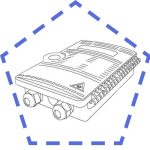 Fiber Optic Termination Boxes
Fiber Optic Termination Boxes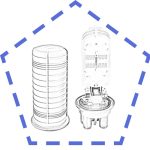 Fiber Optic Splice Enclosures
Fiber Optic Splice Enclosures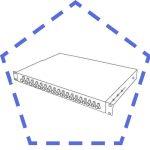 Fiber Patch Panels
Fiber Patch Panels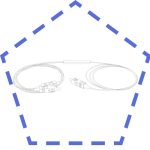 Fiber Optic Splitters
Fiber Optic Splitters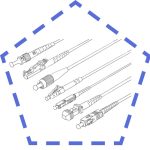 Fiber Optic Pigtails
Fiber Optic Pigtails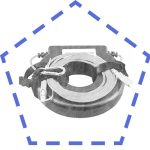 OTDR Launch Cables
OTDR Launch Cables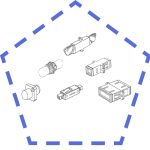 Fiber Optic Adapters
Fiber Optic Adapters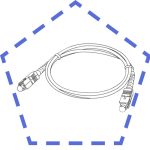 Fiber Optic Patch Cords
Fiber Optic Patch Cords